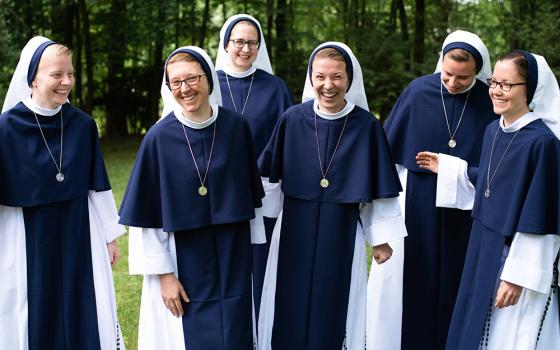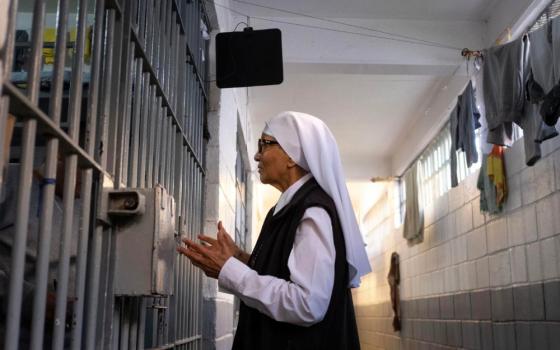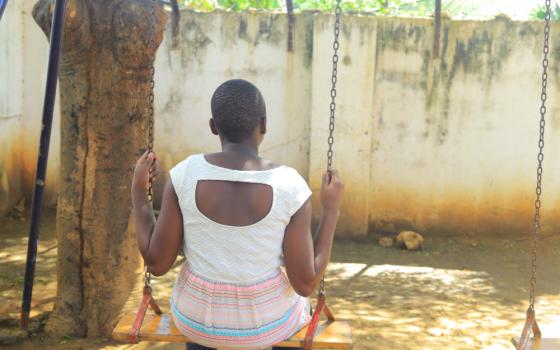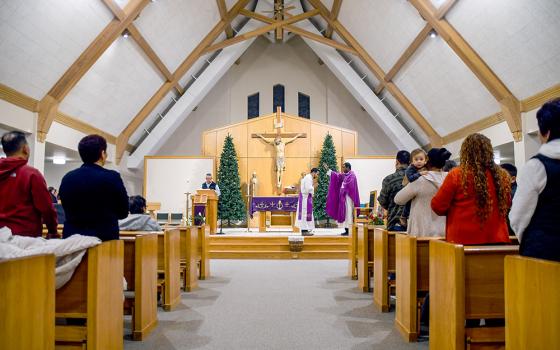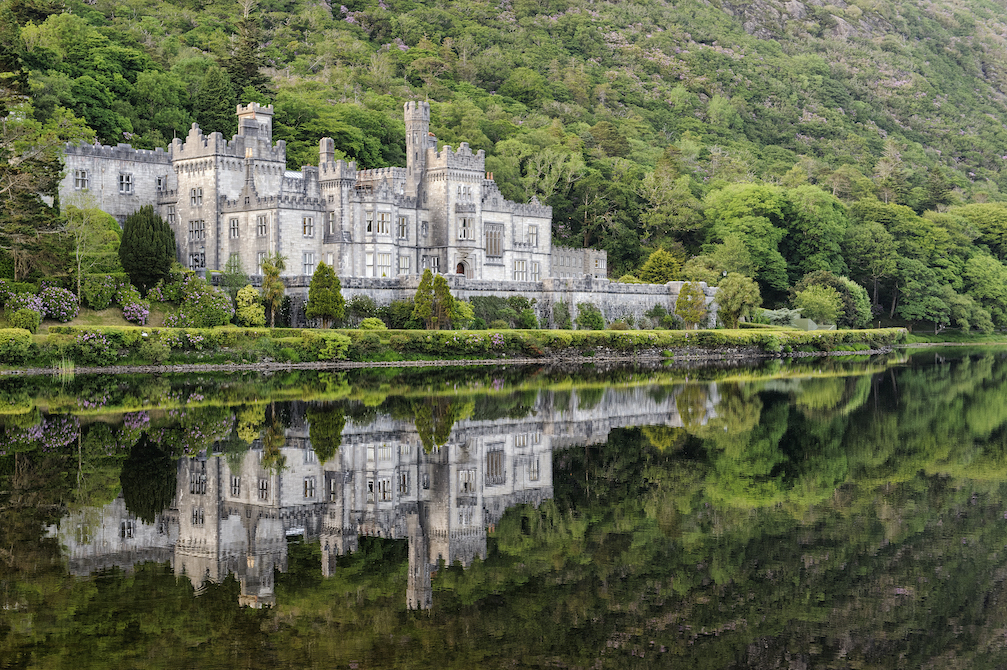
Kylemore Abbey, County Galway, in the heart of scenic Connemara, where the Benedictine community settled in December 1920. The 1,000-acre estate is popular with visitors for its woodland and lakeshore walks. The abbey entered into a partnership with the University of Notre Dame in 2015 and now hosts academic programs for Notre Dame students and the university in renovated spaces within the abbey. (Courtesy of Kylemore Abbey)
One hundred years ago, in December 1920, a community of Benedictine nuns fleeing war-torn Belgium settled at the 1,000-acre estate of Kylemore Abbey in County Galway, Ireland.
The abbey planned a host of celebratory events for 2020 to mark the centennial, but the COVID-19 pandemic forced the community to cancel its plans and shut the abbey's scenic Victorian walled gardens, a major tourist attraction in the West of Ireland.
On July 3, after four months of lockdown, Kylemore Abbey reopened to the public. Abbess Sr. Máire Hickey spoke to Global Sisters Report about the impact of the pandemic on the centenary celebrations, how the Benedictine community dealt with the lockdown, and the impact the crisis has had on their Connemara business.
GSR: How did the lockdown affect the community?
Hickey: On March 12, the abbey and the visitor center went into lockdown, and the nuns withdrew into a secluded life in the farmhouse on the estate. The lockdown meant that everything apart from the daily life of the nuns had to be put on hold. All tours were canceled. No visitors came. A skeleton staff was taking care of the abbey area while the nuns lived a more enclosed kind of Benedictine life than usual.
Although most of us are normally engaged in some way with what is happening at the abbey, a break from the tourist business — a time of quiet and relative solitude — is very much in keeping with our contemplative Benedictine vocation. Our way of prayer is centered on the solemn celebration, in community, of the liturgy of the church (Divine Office and Eucharist), with ample time for reading, study and personal prayer. With a big reduction in phone calls, emails, meetings, visitors and other activities, we felt almost as though we were on a prolonged time of retreat.
What particular challenges did it present you with as a religious community?
During the lockdown, there were eight of our community present and some guests. It was like a mini-U.N., with one sister each from China, from Rwanda and the Philippines, as well as our chaplain, a Benedictine monk from India. Social distancing was not too bad.
The mission of a monastic community is to live Christian community life as a witness to the presence of God in the world and to share our life with others as a way of sharing faith and the message of the Gospel. Life in lockdown was not too different from our normal everyday life, although it was sometimes more challenging than usual for us to live together at such close quarters for such a long time.
Enjoying the privileges of our peaceful, prayerful life on the one hand, and growing in awareness of the terrible reality of COVID-19 and the pain, tragedy and loss of life that innumerable people all around the world were suffering on the other, led to new depths in questioning about the meaning of our life.
As regards mission, we continued our normal outreach of email contact with people from all parts of the globe asking for prayers or advice of some kind. Seeing livestreamed liturgies from other monasteries, we realized that many people are hungry for this kind of contact with a monastery. One of our wins from lockdown was that some of us used the opportunity to update our IT [information technology] skills with Zoom, webinars, etc. Lockdown has left us eager to learn more and to start using our new skills to reach out to wider circles of onliners looking for spirituality and worship on the web.
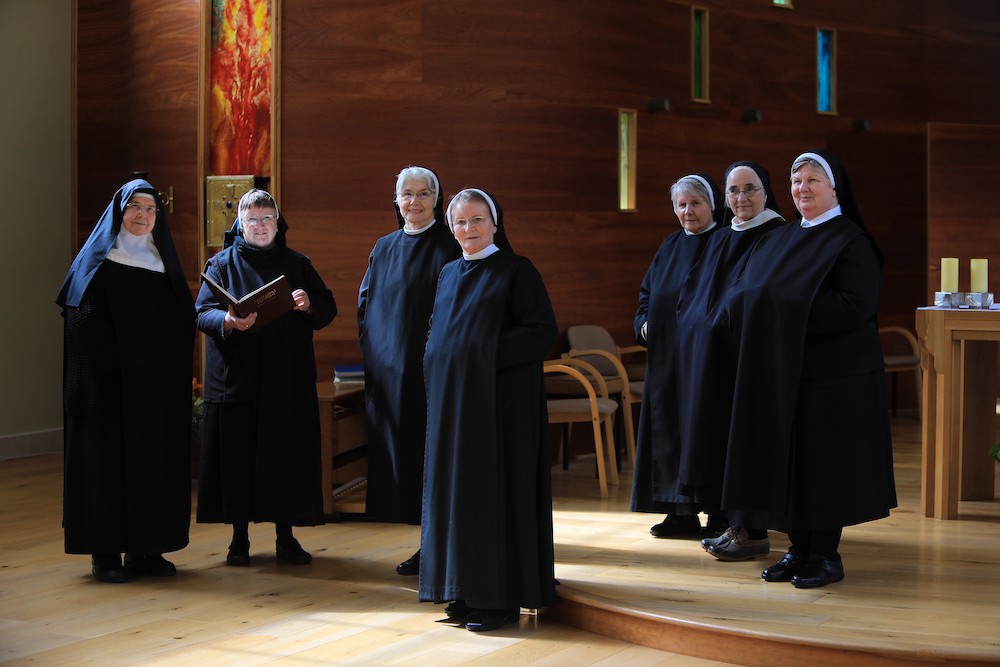
The Benedictine community in Kylemore Abbey. Abbess Sr. Máire Hickey is the first nun on the left. (Courtesy of Kylemore Abbey)
What kind of setbacks did the pandemic cause?
The Benedictine community was particularly affected by the pandemic, as the closing of the abbey and the travel restrictions put paid to our plans to begin the celebration of the centenary of our arrival in Kylemore in December 1920.
Two major disappointments were the postponement of the alumnae reunion day until June 2021 and the setback to our monastery building plan. We had hoped to move into the new monastery building in December of this year. That will not be happening. We set up Plan B immediately and are now ready to have some renovations and refurbishment done in the farmhouse to give us, in the short- and middle-term, some extra rooms for a couple of new people who are coming to join us this year pending the completion of the monastery.
What kind of losses have you incurred, and how will you recoup this lost revenue? Will it affect your development plans?
The financial losses are enormous, and recouping will not be easy because we will not get back to the visitor numbers we have had recently for a long time, if ever. We are postponing or curtailing many of the projects we had planned, and we are working hard to make Kylemore, in spite of the challenging financial situation, as attractive a visitor center as it has always been.
But not everything has ground to a halt. We hope that we can, within the financial constraints, start a modest retreat program in cooperation with the University of Notre Dame later this year and into 2021. Our plans to host a small group of Indian sisters who have asked us to help form them in the Benedictine way of life can go ahead. We are always delighted to have Irish visitors, and we are hoping that there will be lots of staycations in Connemara, starting a new trend. We even hope that Irish visitors will outnumber our visitors from abroad one day.
Advertisement
Can you tell us about the increasing international dimension of the Benedictine community in Kylemore?
The Benedictine Confederation, to which Kylemore belongs, is a far-flung international association of men's and women's monastic congregations, and Kylemore has always had many connections not only with boarding-school pupils from abroad with their families, but also with other communities within our order.
Our community always experienced it as an enrichment when communities in other countries sent a member for a long-term stay at Kylemore. Over the next few months, as travel restrictions hopefully ease, we will be welcoming sisters from Germany and India and an interested guest from Argentina.
We do not normally leave our monastery to work among the less advantaged in other parts of the world. But through our mission of living community life with sisters from other cultures, we try to gain firsthand experience of how they live at home. Inclusive, mutually respectful community life is our lived prayer for justice and peace and care for creation, our common home.
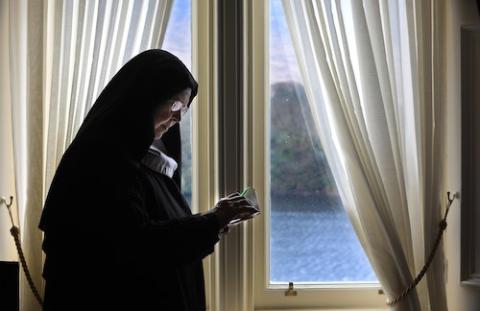
Abbess Sr. Máire Hickey at prayer (Courtesy of Kylemore Abbey)
How are the Benedictines reemerging from lockdown?
Our public church was closed all through the lockdown. Our resident chaplain was able to celebrate the Eucharist with us every day. We are continuing with this arrangement for the present and will reopen the public church before very long. On Saturday, July 11, St. Benedict's Day, we celebrated the community Mass in the Gothic chapel. Our Notre Dame friends livestreamed it.
The abbey with the visitor center and gardens has begun to receive the first batch of tourists. Intensive preparations went on for several weeks. All the staff have been enthusiastic and looking forward to a new start. Everyone is realistic about the fact that COVID-19 is particularly cruel to tourism and all businesses and localities connected with it. But we are all determined to make our beautiful Kylemore work again.
There is no getting away from the disastrous effect on business, the closure of the visitor center, the cancellation of events planned for our centenary year, including the completion and opening of our long-awaited monastery, as well as its effects on the whole country and our economy and social life.
Maybe it helps to see all that in a wider context. During the lockdown, the thought occurred to me: Cocooning is not just a protective measure. The cocoon is the place of new, transformed life, where the caterpillar turns into a butterfly. And in Christian spirituality, the butterfly was for centuries an important symbol of the resurrection of Christ. Maybe there is great new life burgeoning in the cocoon, and not just for us.
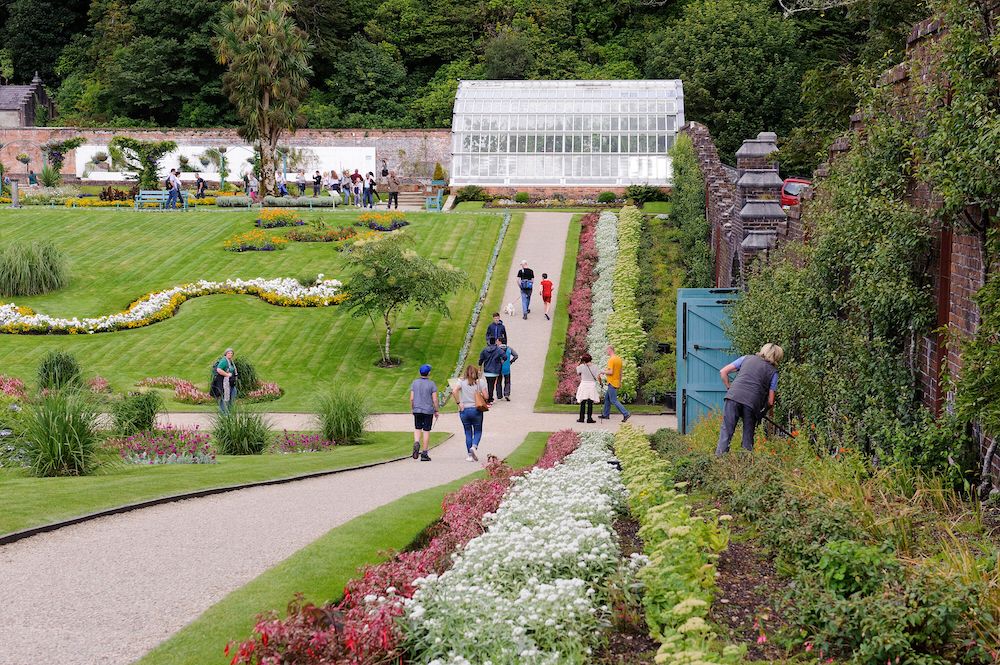
Kylemore Abbey's 6-acre Victorian walled garden has restored garden buildings and flower, vegetable and herb gardens. (Courtesy of Kylemore Abbey)
[Sarah Mac Donald is a freelance journalist based in Dublin.]

